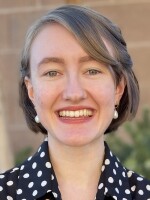Deadly traffic accidents are up 46% in Nevada since 2013, and they show no sign of slowing.
That’s one of many findings out of the Nevada Road Users Database Traffic Study, administered by UNLV’s Kirk Kerkorian School of Medicine.
The study is entering its 14th year, and just received a $650,000 one-year grant from the state to continue studying — and hopefully preventing — traffic accidents.
Dr. Deborah Kuhls is associate dean of research at UNLV’s Kirk Kerkorian School of Medicine, as well as the study’s principal investigator. She said the money would go towards the study’s latest project: diving more deeply into who gets into crashes, and what the long-term effects of that are.
“We’re really trying to develop a complete picture of the profile of the driver, in terms of their driving record, and a complete look at from the scene all the way to hospital discharge: what happens to the people who are injured and how many die at the scene?” she said. “When they do leave the hospital, do they go home? Do they go to a rehab center?”
The ultimate aim is prevention. That poses its own challenge in large cities like Las Vegas and Reno, which average around 50 and 20 traffic accidents each day, respectively.
“The magnitude of the challenge is so significant that even our governor, I believe it was before the legislature started, actually advocated for automated enforcement,” Kuhls said. “He felt that the amount of speeding that goes on [and] racing through intersections is so prevalent that it's almost impossible for law enforcement to have enough agents to really curb the issue.”
That’s why Kuhls recommends all drivers, whether urban or rural, buckle up and stay vigilant while behind the wheel.
“Our automobiles have become as almost as comfortable as our living rooms, [and] that leads us into a false sense of security. We really need to be aware of how fast we're traveling and to drive responsibly.”
Guest: Dr. Deborah Kuhls, associate dean of research, UNLV’s Kirk Kerkorian School of Medicine, chief of trauma, UMC









